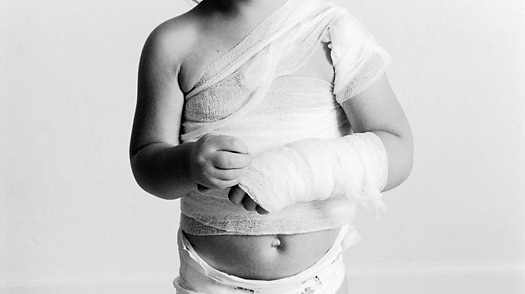 Each year, more than 3 million child abuse reports (reports often contain the abuse of more than one child) are made in the United States alone. Furthermore, it is estimated that in 2009, 3.3 million child abuse reports and allegations were made, involving an estimated 6 million children (Child Help).
Each year, more than 3 million child abuse reports (reports often contain the abuse of more than one child) are made in the United States alone. Furthermore, it is estimated that in 2009, 3.3 million child abuse reports and allegations were made, involving an estimated 6 million children (Child Help).Jurors deliberate fate of “Angry Mom” from Dr. Phil show, Child abuse survivor can return to Texas, Chandler couple arrested on suspicion of child abuse, Costa Rica nabs man sought on Texas child abuse charge, Parents arrested for child abuse after near drowning at Tempe motel, York man gets prison for child abuse, drug delivery, Infant’s parents arrested on child abuse charges, Mother charged with felony child abuse of 3-year-old, Harford child psychologist pleads guilty to abusing 3 girls, Man Pleads Guilty in Shocking Child Abuse Case…
Looking over the headlines and then reading the atrocities committed against fragile and innocent infants and children, the biggest horror one reads is that of the story the lies in between the lines. The story that we don’t want to talk about; that is, how do we even let it get this far in the first place? With abuse and neglect so under reported it makes one wonder who is really looking out for our children.
Last month I published the piece, Caylee’s Law: Is Justice Served? The article asks the question; As many across the country were outraged at the “not guilty” verdict of Casey Anthony, is the question for justice for Caylee now to be served via increased legislation? “Caylee’s Law,” which was pushed forward from a Change.org petition immediately after the headline trial, would make it a felony for a parent to fail to report a missing child to law enforcement. Following the campaign, more than 18 states draftrf versions of Caylee’s Law. Legislators in Alabama, Florida, Georgia, Hawaii, Kansas, Kentucky, Louisiana, Maryland, New Hampshire, New Jersey, New York, North Carolina, Ohio, Oklahoma, Pennsylvania, South Carolina, Texas, and West Virginia have all announced that they are drafting versions of “Caylee’s Law” prompted by the petition on Change.org. However, while this is a step forward towards increasing legislation, it, along with that of the 2008 PROTECT Our Children Act, which helps law enforcement track and prosecute sexual predators targeting children, is not enough to protect our children. Of course the prosecution of those who harm and kill children is vital, we must take bigger steps to see an end to the abuse.
Following the attention gained from the Casey Anthony trial and the pending legislation, the issue of child abuse was thrust back into the spotlight and prompted the article asking the question; Preventing Child Abuse: Is the United States Doing Enough? The answer to the question is sadly no. If reporting of abuse and neglect are so significantly under represented then regardless of how harsh the prosecutions given predators and abusers are, we are failing our children by continuing to allow them to remain in harms way. We must increase the prevention of such abuse. Knowing the warning signs of abuse are key for every adult in keeping our children safe from harm, awareness is the first step in prevention.
Know the 10 common signs of child abuse:
* Unexplained injuries. Visible signs of physical abuse may include unexplained burns or bruises.
* Changes in behavior. Abused children often appear scared, anxious, depressed, withdrawn or more aggressive.
* Returning to earlier behaviors. Abused children may display behaviors shown at earlier ages, such as thumb-sucking, bed-wetting, fear of the dark or strangers.
* Fear of going home. Abused children may express apprehension or anxiety about leaving school or about going places with the person who is abusing them.
* Changes in eating. The stress, fear and anxiety caused by abuse can lead to changes in a child’s eating behaviors, which may result in weight gain or weight loss.
* Changes in sleeping. Abused children may have frequent nightmares or have difficulty falling asleep, and as a result may appear tired or fatigued.
* Changes in school performance and attendance. Abused children may have difficulty concentrating in school or have excessive absences, sometimes due to adults trying to hide the children’s injuries from authorities.
* Lack of personal care or hygiene. Abused and neglected children may appear uncared for.
* Risk-taking behaviors. Young people who are being abused may engage in high-risk activities such as using drugs or alcohol or carrying a weapon.
* Inappropriate sexual behaviors. Children who have been sexually abused may exhibit overly sexualized behavior or use explicit sexual language.
Click here to learn the signs of child abuse and to pledge to take action.
Child Abuse and Neglect – Facts, Warning Signs of Abuse and How to Report It
Please also see;
If you suspect a child is in immediate danger contact law enforcement as soon as possible.
1-800-4-A-CHILD – Childhelp National Child Abuse Hotline
1-888-PREVENT – Stop It Now
1-800-656-HOPE Rape, Abuse & Incest National Network (RAINN)